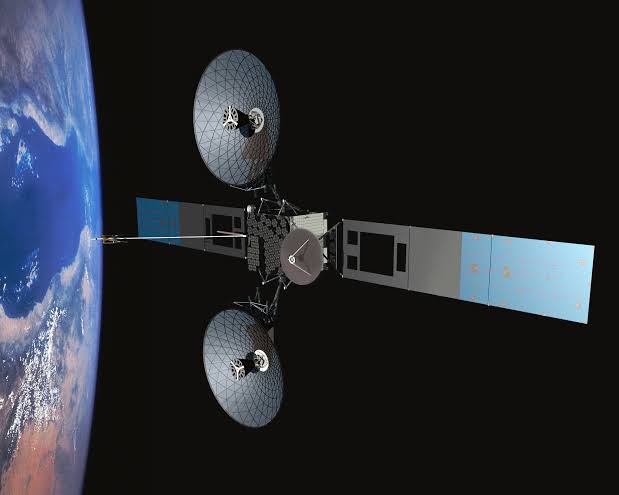SpaceX is one of those companies that can replace NASA’s aging space communications service, which has been connecting the International Space Station to Earth for decades.
Why Is TDRS Important?

The third generation of TDRS satellites has been launched since the 1980s, when the original constellation was developed to support Space Shuttle missions. The current third-generation satellite was launched in 2017.
For many years, NASA’s TDRS (Tracking and Data Relay Satellite) constellation has served as a key link between the International Space Station and Earth, giving astronauts the ability to interact and stay in touch with the public, as well as continuous communication with ground controllers provided with their loved ones.
Can there Be Another TRDS?
But the U.S. Space Agency plans to dismantle six aging satellites within the next decade and hand over their missions to commercial companies. This month, the agency announced partnerships with six commercial satellite operators, including SpaceX.
British companies Inmarsat, American Viasat and Swiss SES show how they can handle NASA’s space communications needs in the future.
“We have no plans to launch any new TDRS satellites in the future,” Elie Naffah, NASA’s commercial services project manager, which oversees commercial partnerships, said an official. “The plan is basically to let the constellations reach their end of life. “At some point in the decade, we will have limited capacity and commercial companies plan to come up with other ways of providing telecommunications services for our mission.”
What Is The Mission Of TDRS?
The role of TDRS is to provide uninterrupted continuous communication between the spacecraft orbiting the planet and NASA ground centers. TDRS supports the Hubble Space Telescope and also the International Space Station and other scientific missions
How Does TRDS Work?
To provide continuous coverage, a constellation requires at least three satellites in geostationary orbit scattered around the Earth. Geostationary satellites orbit the planet at an altitude of 22,000 miles (36,000 km) whose orbital period coincides with Earth’s rotation.
As a result, the satellite appears to hang above a fixed point on the planet. The current TDRS has six active satellites, but the three second-generation satellites are over 20 years old and are nearing the end of life.
“When we developed TDRS in the 1980s, there was no way we could offer this service commercially,” said Naffah. “But since then, the industry has far surpassed NASA’s investment in this space. There is a lot of infrastructure that can provide these services to spacecraft, both on land and in orbit.”
What Are Private Companies And NASA Planning?
In the next three years, six companies will develop a demonstration project demonstrating the capabilities of a communications satellite. For communication with the orbital platform.
Naffah said that this could cause some technical problems.
Most commercial telecommunications satellites connect to fixed terrestrial antennas or mobile terminals on ships or aircraft, which travel at much slower speeds than orbiting satellites.
For example, commercial aircraft fly at speeds between 460 and 575 miles per hour (740,930 km/h), while space stations orbit the Earth at about 17,500 miles per hour (28,000 km/h).
According to Naffah, NASA will invest $278 million in the project over the next five years, with the agency’s industry partners contributing a total of $1.5 billion to be put into work.
“We hope to achieve cost-effectiveness in purchasing commercial services and allow us to focus more on science and research, away from the business of network operations,” said Naffah.
Conclusion
NASA wants to outsource a significant portion of its low-orbit operations to commercial companies. The space agency is already purchasing cargo and crew services from Northrop Grumman and SpaceX, and Boeing is expected to join the list later this year.
NASA says it will dismantle the International Space Station in 2030 and that all future humans will be in low Earth orbit. Even the visits of our own astronauts will all be managed by commercial operators.